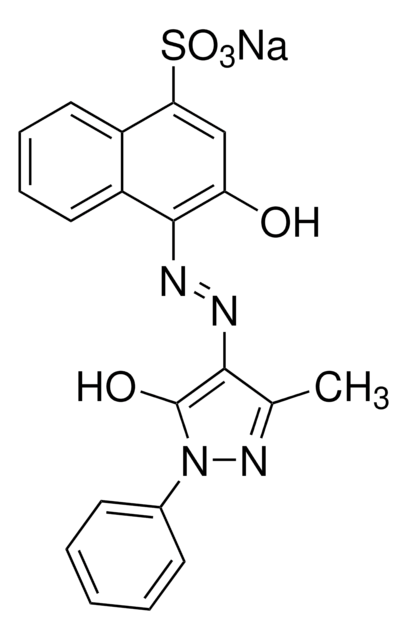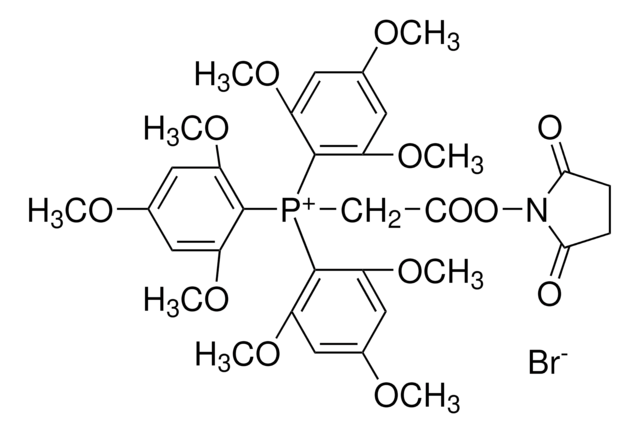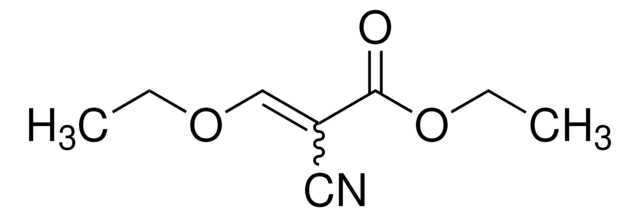05689
Diethyl ethoxymethylenemalonate
for LC-MS derivatization, LiChropur™, ≥97.0% (GC)
Synonyme(s) :
DEEMM, Ethoxymethylenemalonic acid diethyl ester
About This Item
Produits recommandés
Niveau de qualité
Pureté
≥97.0% (GC)
Forme
liquid
Qualité
LiChropur™
Technique(s)
LC/MS: suitable
Indice de réfraction
n20/D 1.462 (lit.)
Point d'ébullition
279-281 °C (lit.)
Densité
1.07 g/mL at 25 °C (lit.)
Chaîne SMILES
CCO\C=C(\C(=O)OCC)C(=O)OCC
InChI
1S/C10H16O5/c1-4-13-7-8(9(11)14-5-2)10(12)15-6-3/h7H,4-6H2,1-3H3
Clé InChI
LTMHNWPUDSTBKD-UHFFFAOYSA-N
Vous recherchez des produits similaires ? Visite Guide de comparaison des produits
Mention d'avertissement
Warning
Mentions de danger
Conseils de prudence
Classification des risques
Acute Tox. 4 Oral - Aquatic Acute 1 - Aquatic Chronic 2 - Eye Irrit. 2 - Skin Irrit. 2 - Skin Sens. 1A
Code de la classe de stockage
10 - Combustible liquids
Classe de danger pour l'eau (WGK)
WGK 1
Point d'éclair (°F)
291.2 °F - closed cup
Point d'éclair (°C)
144 °C - closed cup
Choose from one of the most recent versions:
Déjà en possession de ce produit ?
Retrouvez la documentation relative aux produits que vous avez récemment achetés dans la Bibliothèque de documents.
Notre équipe de scientifiques dispose d'une expérience dans tous les secteurs de la recherche, notamment en sciences de la vie, science des matériaux, synthèse chimique, chromatographie, analyse et dans de nombreux autres domaines..
Contacter notre Service technique









